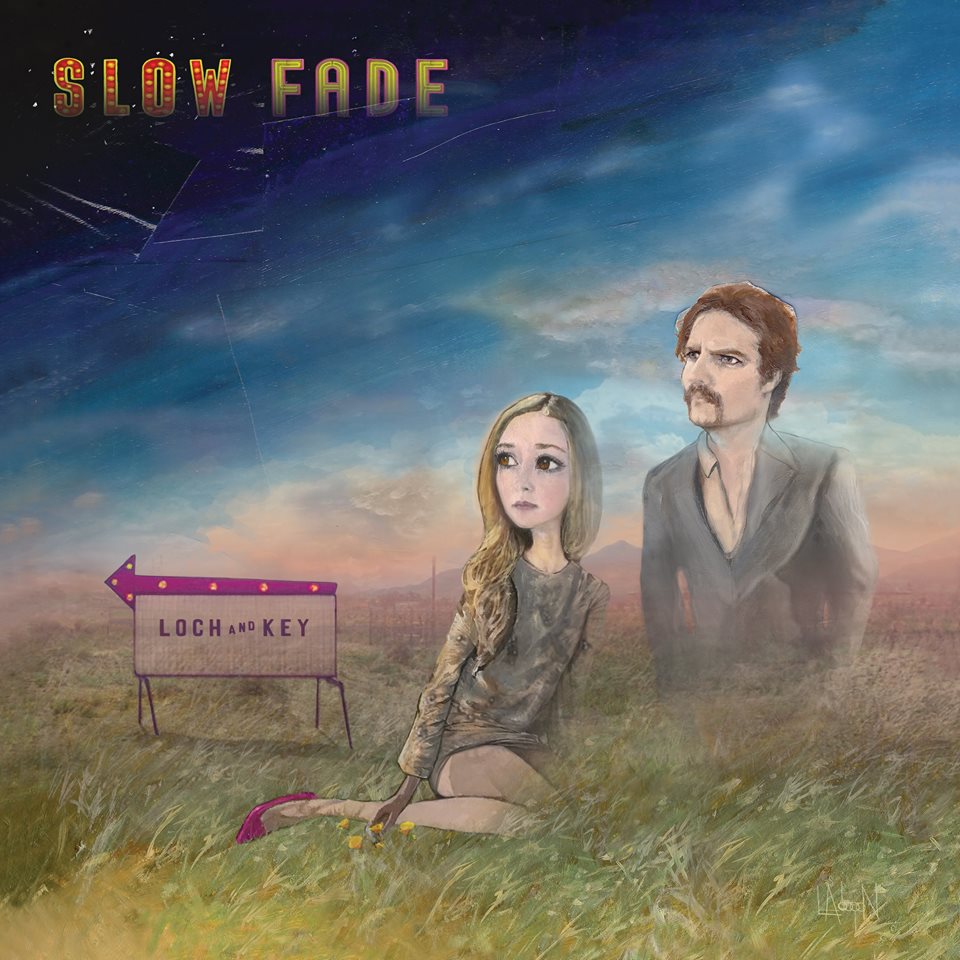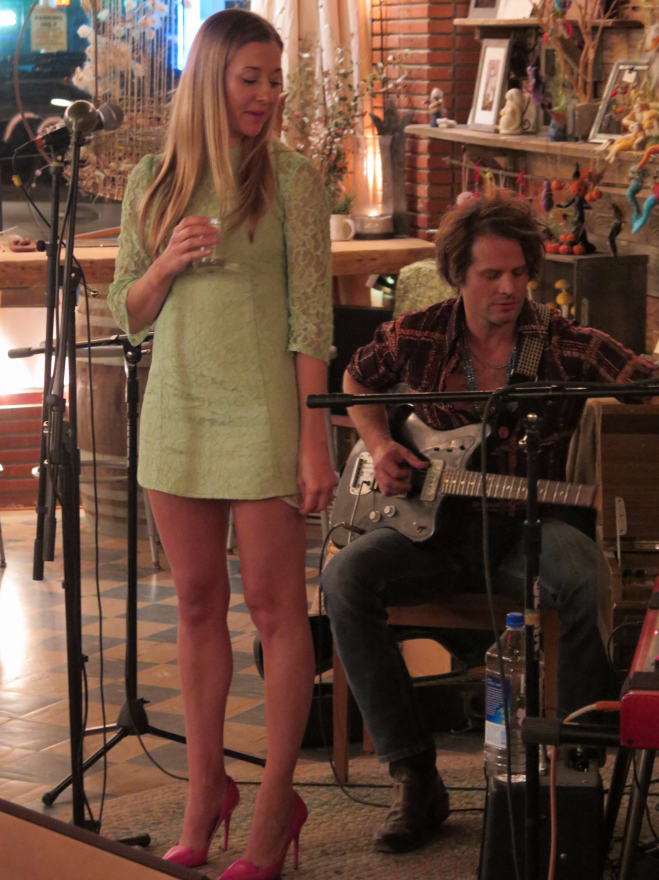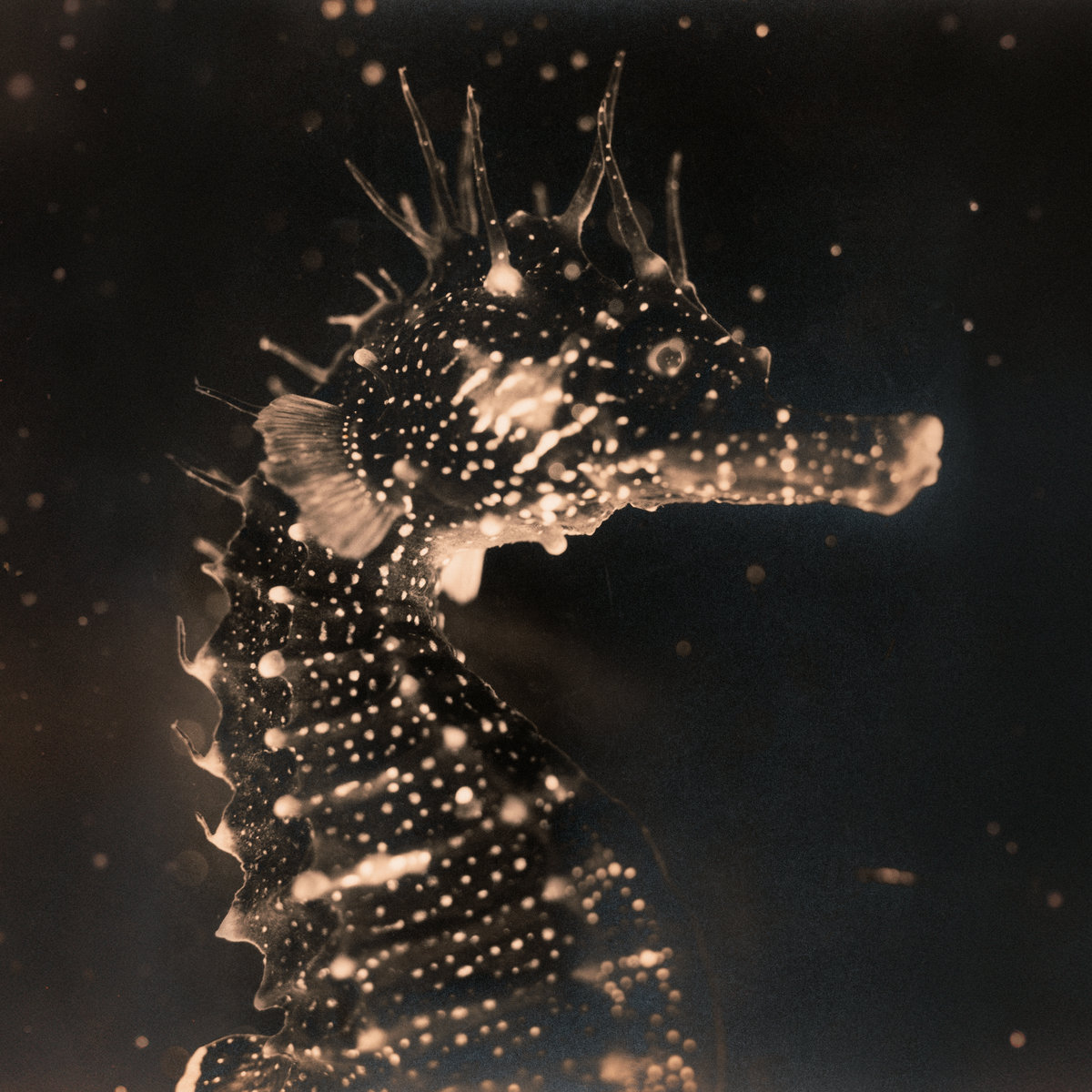Loch & Key interview
Sean Hoffman and Leyla Akdogan Hoffman comprise the husband and wife duo Loch & Key, who have released two albums together: Jupiter’s Guide for Submariners (2010) and Slow Fade (2017). Sean (who has also been in The American Music Club, Bedroom Walls, and various other bands) is a guitarist and multi-instrumentalist; while his wife Leyla is an award-winning visual artist, lyricist and vocalist. The duo’s music can best be described as ‘dream wave’ and it freely mixes and matches folk, jazz, bossa nova, ambient electronica, doo wop, and psychedelic styles. They are often joined by fellow musician and friend Kip Boardman on keyboard for live performances. I interviewed the Los Angeles-based Loch & Key in late 2017 concerning the couple’s beautiful music, influences, and other projects.
Loch & Key’s aesthetic is eclectic – I sense influences including Mazzy Star, Nick Drake, and Françoise Hardy – and I detect some vocal similarities between Isobel Campbell (Belle & Sebastian, The Gentle Waves) and Leyla’s singing styles in terms of breathiness and an overall ethereal, soothing quality. Who inspired you?
Leyla Akdogan Hoffman: I hadn’t listened to Isobel Campbell, but after your question I checked her out and can see the similarity. She has a lovely voice so I’m flattered by the comparison. Françoise Hardy too. Sean is an influence in that he often steers me toward the breathier side of my voice for Loch & Key.
Sean Hoffman: My favorite 45 rpm as a child was a version of the William Tell Overture. A few years later I was listening to Metallica’s Ride the Lightning … I could go on for at least a few hundred more and there would be no common thread.
“We’re just trying to create something beautiful.”
The idea for Loch & Key happened while you were in the south of France in a laundromat – at the time were you thinking to adapt a Serge Gainsbourg/ Françoise Hardy ’60s French yé yé pop style sensibility, but with original lyrics en anglais or what was your vision?
Leyla Akdogan Hoffman: We didn’t have a plan for our sound when we started. As I recall at the time Sean was thinking to do an instrumental record; and I was a singer in search of a guitar player (of course I wanted to work with Sean). He played me a song he wrote, asked me to try singing it, and we just kind of went song by song from there. I’d say Sean’s jazz background was an influence on the first record especially. Think we had some Getz and Gilberto on our mind too.
Sean Hoffman: While the beauty of the Mediterranean heavily influenced the sound and mood of the record, the New World probably had more influence on the actual music. At that time I had just finished my final tour with American Music Club and invited Leyla to join me in Spain. We rented a car and drove down to Sicily where we were meeting friends. I picked up a souvenir guitar along the way and the songs started to write themselves. As far as vision for the group, we’re just trying to create something beautiful.
I know Mick Harvey put out a few Gainsbourg cover albums with Anita Lane singing the Jane Birkin vocals, and, more recently, The Last Shadow Puppets (Miles Kane and Alex Turner) have covered Jacques Dutronc’s “Les Cactus”- has Loch & Key covered or considered covering any of the classic yé yé songs either en français or translated in English, or some of the ’60s Brazilian Tropicalia tunes by artists including Os Mutantes, Gal Costa, or Caetano Veloso?
Sean Hoffman: We are often compared to French pop and Yé yé but to be honest my knowledge of it is fairly limited. Other than hearing a handful of popular songs by France Gall, Françoise Hardy and Serge Gainsbourg, I’m pretty ignorant of the genre. Leyla is more familiar with that music and I think it shows in her vocal style. Our playful arrangements, rhythms and use of colorful tensions in the chords I think inspire the comparisons. We both love bossa nova and Brazilian music in general, but I’m reluctant to do covers of the genre out of fear of being exposed as a fraud. I like to borrow from the art form and make new rules for myself, but I know I’ll never be a real gaúcho.
Leyla Akdogan Hoffman: We hadn’t… but now that you mentioned it we might…

Slow Fade is a very diverse album which has dream pop/bossa nova/jazz (“Seen Not Heard”), ambient electronica (“Deep Space”), country (“Madonna Inn,” “Barstow”), doo wop (“Big Cats”), and psychedelic (“A Throne For The Clouds,” “Kaspar Hauser”) genre songs – and even has songs named after Gil Perez, and Kaspar Hauser (Gil Perez was a soldier who allegedly found himself miraculously teleported from Manila to Mexico City in 1593; Kaspar Hauser was a 19th century German foundling, allegedly raised in complete isolation, and widely speculated to be linked to the grand ducal House of Baden – from which it was theorized he was spirited away as a baby for political reasons. He lived a short, ultimately tragic life and was considered the proverbial ‘wild child.’). What’s your creative method? Are you a Werner Herzog fan?
Sean Hoffman: As far as the various styles referenced throughout the record, my philosophy is you do whatever best fits the song. I don’t mind if a record goes from a grindcore jam to a show tune-just do what’s right and try not to be derivative, unless that’s what’s best for the song.
Herzog’s film [The Enigma of Kaspar Hauser ], I should note, has a wonderful performance by the actor/artist Bruno S. (Schleinstein).
Leyla Akdogan Hoffman: …often [Sean brings] a different style or mood than I’d initially imagined (like with “Madonna Inn” & “Barstow”), which I tend to resist at first then inevitably come to prefer.
Leyla, you are a visual artist as well as a musician, how does that inform your approach to performing? Also, I really like the cover art for Slow Fade – did you paint it? Are there any current or upcoming exhibitions of your art in LA or elsewhere that you would like to mention?
Leyla Akdogan Hoffman: Thank you! Yes, it was a collage of two paintings over paper cut-outs and a photo in the end. I don’t have any exhibits planned at the moment. I’m working on a series of videos for Slow Fade which we’ll be rolling out over the next few months, beginning in early October with Gil Perez.
To your first question, as with visual art, I try my best to deliver something that appeals to the senses and makes people feel something they want to explore and return to. As an introvert, I’m much more comfortable creating in private and sharing the finished work as a separate thing from myself. However, singing and sharing music live (when the sound is good) is an electric experience that gratifies in a way that feels more immediate and intense than sharing visual artwork.
How do you use being a lawyer to interface with the creative arts?
Leyla Akdogan Hoffman: The skills I’ve developed in becoming a lawyer have helped in the spaces between being an artist and being a professional. I think I use being an artist more to interface with being a lawyer than the other way around. As a lawyer I focus on representing creatives (artists, musicians, writers, etc.) because I feel like my understanding of the artist’s’ experience puts me in a better position to serve their unique legal needs.
Sean, how would you compare or contrast Loch & Key’s music with the music of Bedroom Walls, Chaparral, or other bands which you have been a member of?
Sean Hoffman: I definitely have borrowed from all the bands I’ve been in, although Loch & Key is not really similar to any of them.
Adam Goldman, the band leader of Bedroom Walls was very dynamically gifted, he really knew when to get real quiet and when to melt faces. I think we use that motif from time to time in L&K.
Playing in American Music Club was both an honor and a trying experience. Mark Eitzel is a true artist, a great lyricist and an interesting guitar player, but there’s some heavy baggage with broken wheels that comes with that gig. In those days you never knew what you were going to get with Eitzel. Was he going to stare at the floor the whole show? Was he going to fight with the audience? Or was he going to rise to a level only magic people can attain? When he had a direct line to the cosmos, you were in for Mr. Toad’s wild ride. People would be sobbing in the audience; it was something I had never experienced before. I definitely borrow from my time with Eitzel. It would be nearly impossible not to.
Vudi, the guitar player in AMC, (I’m very proud to say) is a good friend whom I look up to in all facets of life. He is a feral genius on the guitar, constantly reshaping chords and notes on the fly. He acts as a filter for my bad ideas and guitarisms. If I play some tired guitar part he’ll say, “Oh Sean, I don’t know. There’s some cooties on that.” He really takes being creative and unique seriously. He’s probably sitting in his living room in MacArthur Park listening to ranchera music through old cobbled together mixers and amplifiers as I write this. Eitzel once said about him: “If you’re privileged enough to have Vudi let you into his world, be prepared because it’s big, beautiful and guarded by one of the smartest men in the world.” All in all, we don’t sound like AMC but there are definitely elements and ideals that have carried on in my work.
Chaparral consists of songwriters Kip Boardman and Steve Didelot. Steve was a band mate of mine in The Larks and AMC, so we have quite a bit of experience working together. I’m a fan of Kip and told him that if he needed anyone to throw shapes with, I was interested. We all got together and started playing/writing songs with an emphasis on arrangement. Musically, Chaparral is probably most similar to Loch & Key.

How do you like producing, and how has it been working with Ariel Pink, and also with Don Bolles from legendary punk band The Germs?
Sean Hoffman: I have come to love producing. Folks usually seek me out when they really want to dig in and do adjustments to their writing and arrangements. We go deep into the salt mines in search of the elusive boogie. I’ve found that almost all songs can be ‘fixed.’ When it’s not working one way we’ll try another direction. We’ll make it a waltz or make it a bossa-maybe go completely out for a few bars-whatever it takes to make the song chug along right and spit some fire.
As for working with Don and Ariel, I can kill two birds with one stone. A good friend of mine, Chad Brown (singer of CB Brand, “The Lochness Monster of Country Boogie bands”) and Don Bolles put together a tribute night to Rod Keith (one of the better known song poem writers/producers). For those not familiar with song poems, they were songs written by ordinary folks who paid a fee to have their lyrics set to music by professional musicians. Advertisements for these could often be found in the back of comic books, magazines, tabloids, etc. After you sent your lyrics in with the required fee, you received a 45 rpm or a cassette recording of your song in the mail along with a ‘promise’ that your composition would be played for ‘industry executives.’ The results ranged from bizarre to oddly beautiful and became traded and collected by enthusiasts. Myself, Adam Wade (a name you might recognize from his work in Shudder to Think and Jawbox) and my friend (and monster musician) Mark Lane were the backing band. We had Mr. Pink join us for a couple songs and he was great. He knew the strange arrangements very well-if there was a weirdly cut bar or an off chord that went nowhere on the recording he wanted it played exactly like that. Don Bolles was extraordinary, and quite a singer. He performed with such bravado. He was like a punk rock Johnny Mathis. It was an eclectic evening, comedian Neil Hamburger did a tune, Del Casher (inventor of the wah wah pedal, former guitarist for the Lawrence Welk Show, and an original song poem session musician) joined us for some songs. There’s a bootleg of the night somewhere and ‘talks’ of doing another one. I’m in.
– Sean Mageean



